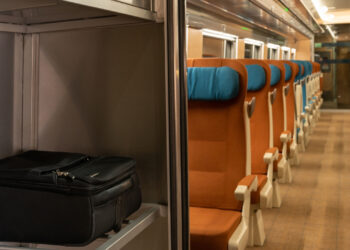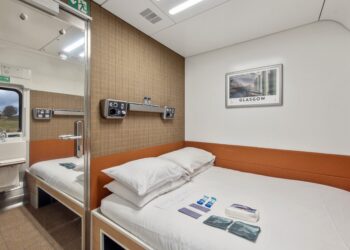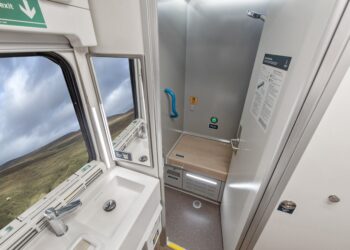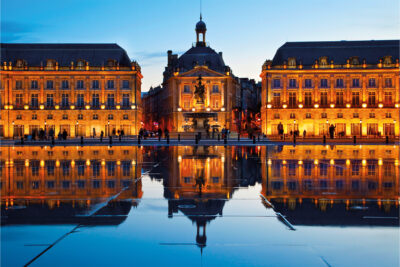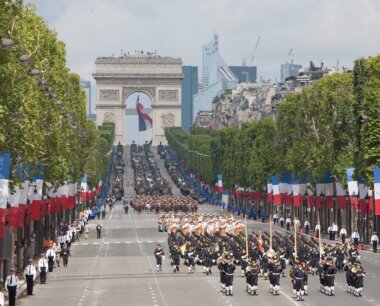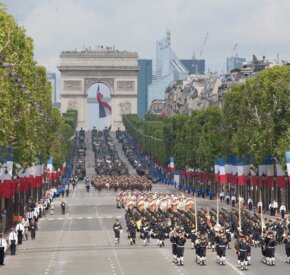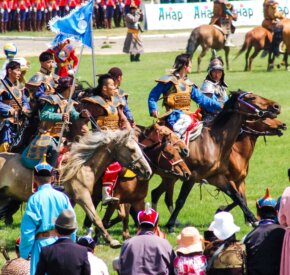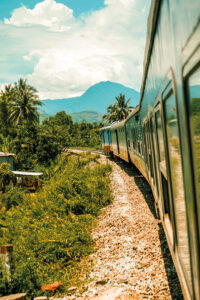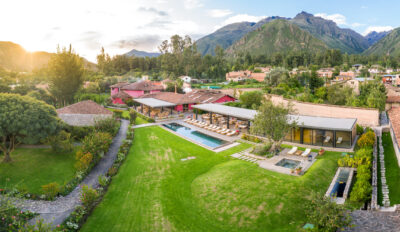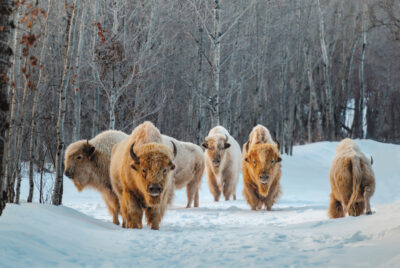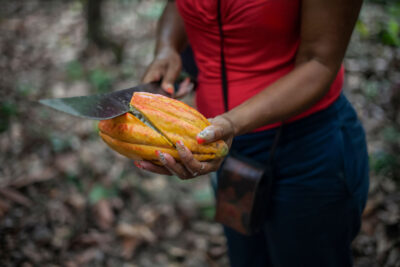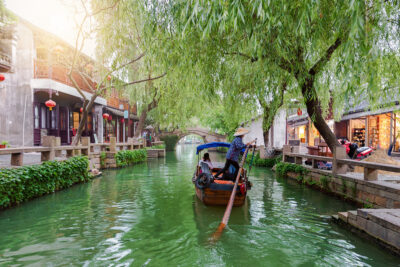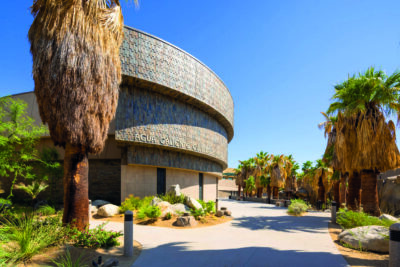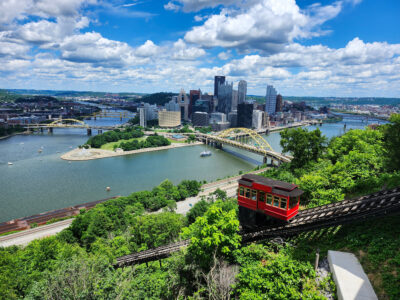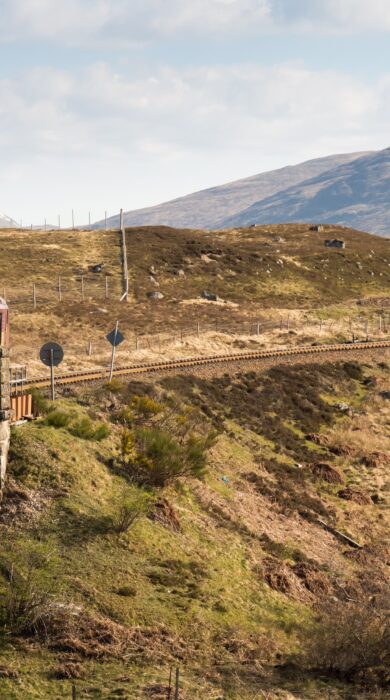
Everything you need to know about taking the sleeper train to Scotland
Convenient, easy and a more sustainable way to travel, here’s what to expect from a journey on the Caledonian Sleeper…
It’s official. Rail travel is, once again, a popular mode of transport across Europe.
In the UK, long distance rail travel dates back to 1873, when the North British Railway launched the first sleeper service between London and Scotland. The Kings Cross to Edinburgh (via Glasgow) route ran along what is now the East Coast Mainline and became the go-to mode of transport for the British Royal Family. Soon after, additional overnight services – called the Caledonian Railway – began running along the West Coast mainline. The Caledonian Sleeper was christened into action under ScotRail in 1996, and the sleeper service we know today was born.
Over the last few years, European countries have been working hard to promote and prioritise travelling overland for the sake of lowering emissions. As a result, travel operators have been expanding their services across the continent. France, for example, has banned short-haul flights to encourage locals and visitors to take the train between nearby cities, and the recently-launched ‘Good Night Train’ overnight services take travellers from Brussels to Berlin, via Amsterdam.
The Caledonian Sleeper continues to be one of the region’s most reliable overnight services, running six days a week (Sunday to Friday). It transports passengers along the roughly 400-mile scenic journey from London Euston to Aberdeen, Edinburgh, Fort William, Glasgow and Inverness, plus a number of rural stops along the way.
Caledonian sleeper ticket options
There are four choices of ticket on the Caledonian Sleeper. These range from a seat to a Classic Room, Club Room (with ensuite) and Caledonian Double (with ensuite).
Seats are the most affordable way to travel. Arranged in a two-plus-one formation throughout the carriage, the lay out allows for a comfortable amount of space for couples and families, and privacy for those travelling alone. Although you can recline your seat (not quite as far back as on a plane), you won’t have the benefit of lying flat.
Seated passengers crucially have access to a lockable storage compartment above the seats, so you can ensure your possessions are stored securely. Seats have a tray table, Wifi and charging points and a reading light, and everyone is supplied with a ‘Sleeper Kit’ consisting of an eye mask and ear plugs. Toilets are shared and available at each end of the seat carriage.
The next category up is the Classic Room – a cosy bunk bed (mattresses are supplied by Glencraft, a Scottish company that work with the Balmoral estate) with private sink. Towels and warm bedding are provided, alongside all the basic amenities (Wifi, charging points, a reading light and a Sleeper Kit) – and luggage can be stored under the bottom bunk.
While a couple or family members could easily share this cabin, it is intimate – making it less comfortable for, say, colleagues. Toilets are shared and available at each end of the Classic Room carriage.
Club Rooms offer a slightly more luxury experience to the Classic Room, with an added bonus of an ensuite bathroom containing a shower and toilet. It is extremely cosy, with the shower essentially hanging over the toilet – but handy for freshening up before arrival.
Meanwhile, the larger Caledonian Double provides a double bed, rather than a bunk, and offers the same facilities as the Club Rooms. All cabins come with keycard access.
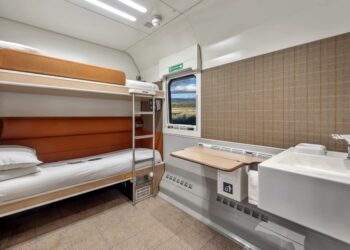
Is the Caledonian Sleeper accessible?
With help from The Shaw Trust, some carriages on the Caledonian Sleeper have been designed to be fully accessible. The most comfortable way to travel is undoubtedly the Accessible Double or Accessible Twin room, which both come with a lowered sink, larger floor space and emergency alarms. There is also plenty of space for a therapy animal to travel in the cabin.
The Club Car also has accessible space for dining, which can be reached via a wheelchair accessible gangway from the Accessible Double room. There is a dedicated wheelchair space in each seated carriage, too.
How long does the journey take?
Trips to Edinburgh and Glasgow tend to take approximately eight hours, boarding at around 11pm and arriving around 7am. Services heading to Fort William, Aberdeen and Inverness take around 10 hours, embarking at around 9pm and arriving just before 8am. While delays do occur, you can keep track of any schedule changes on the Caledonian Sleeper website, which provides real-time travel updates.
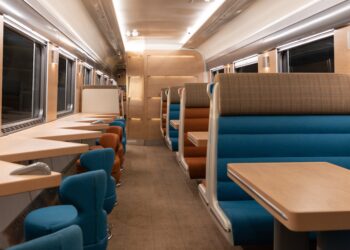
Is there food available?
Dinner, breakfast and snacks are all available onboard, alongside a range of refreshments.
Those in the seats can purchase refreshments and snacks via a call button service, while Club Room and Caledonian Double guests get priority access to the dining car, known as the ‘Club Car’. If there is space, Classic Room passengers are welcome to enjoy the facilities.
Continental and hot breakfasts are served in the Club Car, and are included in the ticket price for all Club Room and Caledonian Double guests. Classic Room passengers pay extra for their meal. Menus follow a Scottish theme, and the majority of ingredients are sourced from Scottish-owned businesses – from bakeries to farms. Menu highlights include the haggis, neeps and tatties with whisky sauce, and the Scottish smoked trout coarse pate.
Weighing up the cost
There’s no denying it, taking the Caledonian Sleeper to Scotland can be expensive – especially if you’re opting for a Club Room or Double. Additionally, prices tend to rise as the departure date approaches. However, if you consider the cost of the accommodation you are saving by sleeping onboard, the price is likely to balance out.
If you book a Club or Caledonian Double, make the most of the complimentary lounge access at either end of your journey. The dedicated Caledonian Sleeper lounges (London Euston, Glasgow, Edinburgh) have hot showers, while all lounges offer snacks and drinks while you wait.
Seats start from £50, Classic Rooms begin at £190 for solo guests and £240 for shared occupancy. Meanwhile, Club Rooms start from £250 for solo travellers and £320 for shared rooms. Whether you choose to travel in a seat or a room, the general theme is ‘cosy’, so packing light is recommended.
Spacious Caledonian Doubles start from £360 for solo guests, and £425 for two. While there is one service to each destination per day, this is a popular service and rooms can sell out months in advance, although seats tend to remain available until close to the departure date.
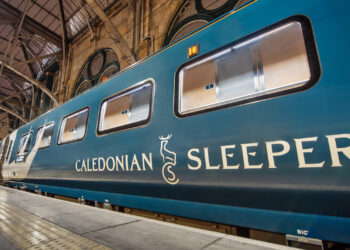
Why you should take the Caledonian Sleeper?
Aside from the comfortable night’s sleep in a bed and the convenient, stress-free way to reach several Scottish regions – imagine, no three-hour airport waits, check-in and security queues or being belted into a compact seat space – train travel is proven to be far better for the environment than flying.
In fact, while a UK domestic flight from London to Scotland produces 0.440kg of CO2e per passenger per mile, this train service emits 0.065kg CO2e per passenger per mile – meaning it is producing nearly seven times less CO2 emissions than travelling by airplane.
Train times are also brilliantly executed, allowing you to spend all day exploring your embarking destination, before heading to the station. Likewise, on the other end, you still have a full day to enjoy, upon arrival.
Another plus is that the sleeper departs from mainline train stations and is easy to reach from any central location. Once you’ve had dinner, you can settle into your cosy cabin for the night and be almost instantly rocked to sleep, just as I was.



